The Ultimate Guide: Brand Narratives For Financial Services (With Case Studies)

Since the beginning of mankind, stories played a central role in communication. To this date, they appeal to our primitive senses and emotions, attracting attention more easily and imprinting a lasting message on the audience.
Storytelling is one of the most powerful delivery methods of any message. And therefore massive businesses have benefited from building significant brands partly off the back of successful brand narratives.
A lot of new businesses struggle in the financial service industry, with it's high competition, poor customer connection, and boring and technical perceptions by the public. In these tough conditions, you can see how adding a human touch to their brand image becomes an extremely powerful differentiator.
In this article, we'll further delve into the concept of brand storytelling, how it can bring out transformative changes to the business's performance and long-term growth, and what steps you should take to build one!
Table of Contents
1) What is Brand Storytelling?
2) Why Does Financial Service Businesses Need Brand Storytelling?
3) Steps in Building an Effective Brand Story:
#1)Identify Your Brand Purpose and Identity– The Origin Story
#2) Construct Your Brand's Persona
#3) Define Your Character's Story Journey
#4) Define Your Brand Power!– Your Brand Story's Message
#5) Write down your Brand Story
#6) Build Authenticity and Integrate it Consistently
4) Conclusion
What Is Brand Storytelling?
Brand Storytelling is the strategic use of narratives to deliver a lasting message usually around the brand's values, purpose, and identity to the target consumers.
It is such a powerful strategy to utilize, as it goes beyond just marketing! It builds robust emotional connections with target consumers & employees, and humanizes their brand image; allowing for trust, loyalty, and differentiation to be achieved easily.
Brand stories are usually executed through blogs, positive media coverage (PR), social media, and paid advertising. Through these channels, branded content is depicted; specifically designed to deliver impactful brand messaging towards the target audience.
Why Does Financial Service Businesses Need Brand Storytelling?

According to a study conducted by Edelman, a global communications firm, it indicated that trust is closely linked to business success in the financial sector; where brands that are perceived as trustworthy are more likely to attract and retain customers. And with storytelling, it effectively builds trust around the brand through relatable and emotionally engaging narratives.

Another study conducted by the Harvard Business Review found that people tend to form loyalty around the brand if they have emotional connections with the brand. And with the increasingly competitive landscape of the financial service industry, brand storytelling can become a significant edge; acting as a necessary driver for sustained profitability through increased customer loyalty.
"Stories are remembered up to 22 times more than facts alone."
Jerome Bruner
Furthermore, it has been found by Psychologist Jerome Bruner, that messages from storytelling are 22 times more likely to be remembered by people than by facts and numbers.
Overall, brand storytelling is proven to be the most significant driver in building trust, loyalty, and recall around brands; promoting stability, strong customer relationships, and increased profitability for businesses, hence effectively clearing out the struggles faced in the competitive and dynamic financial service industry.
Steps in Building an Effective Brand Story:
1) Identify Your Brand Purpose and Identity– The Origin Story
The entire reason for executing a brand storytelling campaign for the business is to boost brand awareness and attract more customers. In doing so, you must first identify your business' brand identity– the foundation of your story.
Your brand identity is the essence of what your brand stands for, its values, purpose, visuals, personality, and power! And if you want a successful branding campaign, you must ensure the audience's image they form about your brand aligns with this identity.

To achieve a clear understanding of your optimal brand identity, you must conduct in-depth market research and collect accurate customer insights to understand your business's position in the market, and the customer's needs and preferences.
You must develop your Ideal Customer Profile (ICP) first. To determine this you must:
- Leverage User-Generated Content (UGC) such as unpaid posts and online reviews through social media listening tools such as Brand 24 and Brand Watch.
- Provide feedback questionnaires and surveys through your email list or after customer support calls.
- Understand your customer's behaviors by analyzing their website interactions; setting up heat maps on your website and using SEO tools such as Google Analytics and Semrush to understand key customer behaviors and emerging keyword trends that your customers engage in.
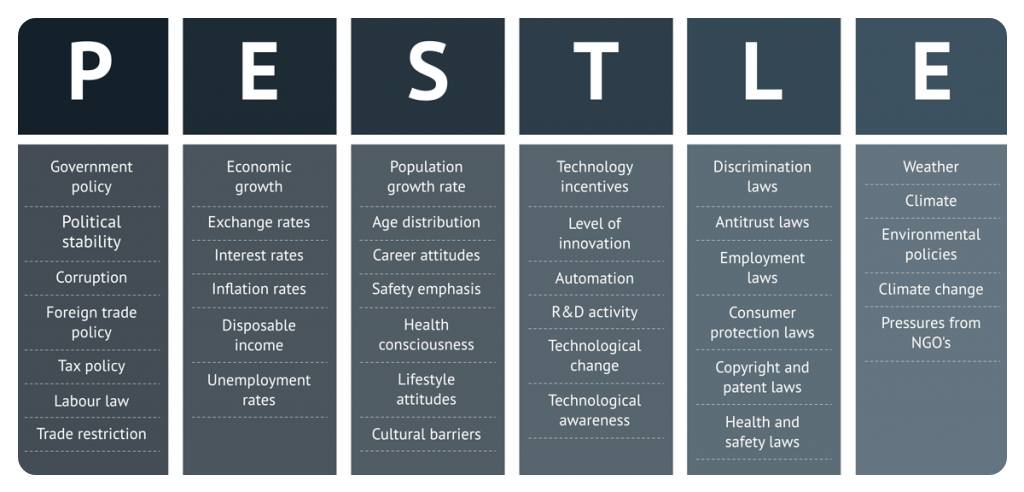
Then you must understand your business's current positioning in the market. You can discover this through SWOT analysis, PESTLE analysis, and competitor analysis. I would recommend referring to this helpful and actionable guide to get a better understanding of how to carry out this research effectively.
From identifying your brand identity, we can focus on your business's origin story; the description of where your business started from, and the drive and reason behind your brand's existence today!
It is the origin story that will be the basis of crafting a compelling story, as it gives a deeper meaning to the organization's brand purpose and goals, and will dictate the kind of journey your hero will go through in your story.
A well-established origin story plays a strong role in building an emotional connection and sense of reliability with your target audience. This helps to humanize your brand and make it more approachable and understandable among the target audience.
Every business owner has an interesting origin story and motivation hidden somewhere in it. It is just a matter of articulating it effectively! Think about these questions to uncover your compelling origin story:
- Why was it created?
- Who founded it?
- How was it founded?
- What is the company’s vision?
- What successes have you had?
- What challenges have you faced?
- How did you overcome them?
Case Study 1– Chipper Cash
To get an idea of the significance of having a well-defined origin story, take a look at Chipper Cash.
This emerging fintech in Africa offers cross-border, local, and crypto transfer services at competitive price levels.
The founders of Chipper Cash, Ham Serunjogi & Maijid Moujaled explains their origin story in this video segment with Forbes. Maijid Moujaled explains his struggles with surviving in the US and the inability of his parents to transfer money internationally.
This simple origin story becomes the roots of their brand identity, as it influences their mission statements, marketing efforts, and how the business operates.
Now the company no longer boasts about its price efficiencies, but instead focuses on the brand power of freedom!
Establishing your origin story is the best way to start brainstorming your brand narrative, as the reason you started this business will most likely relate to the customer's pain points.
Therefore placing this at the heart of not just your storytelling campaign, but also your branding as a whole, will help better create an emotional connection with your audience!
2) Construct Your Brand's Persona
Relatability is the name of the game! To deliver a profound brand message through this story effectively, we must focus on designing a relatable persona; whether it's modeled after the brand itself or the ideal customer.
The character in your brand story should typically personify your ideal customer and their preferences. Including relatable attributes and behaviors will help better connect customers and improve the delivery of the story and its messaging.
Based on deep customer insights and thorough market research, you can refer to your Ideal Customer Profile (ICP) and brand identity to decide from any of the 12 archetypes provided in this framework below.
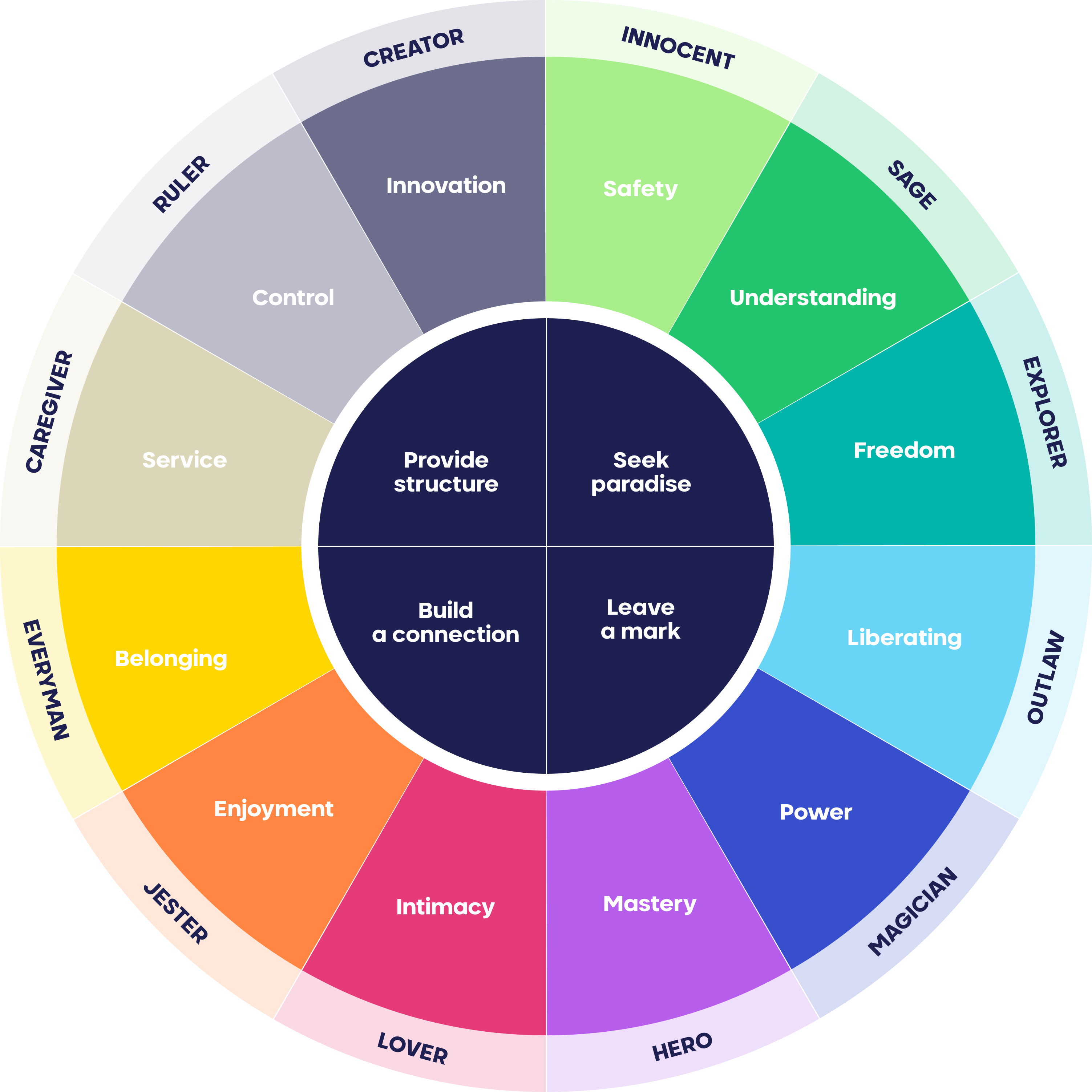
Developed by Carl Jung, this framework will help give a well-defined idea of your main character's ideal persona. It gives an idea of the persona's emotions and associations to be showcased in the story that matches your customer's circumstances.
Furthermore, you can involve another main character that represents your brand identity instead, and have its characteristics and behaviors suit your brand message and customer preference.
Case Study 2– GEICO
To elaborate on this idea, look at this real-life example:

One of America's largest insurance companies, Geico, is a great example of a consistent and powerful brand persona used to deliver a message.
By creating a fun character like GEICO's Gecko, the insurance company was able to establish a humorous and innovative brand image. With its lovable and memorable personality, customers were motivated to buy into the company's brand narratives.
3) Define Your Character's Story Journey
The two most powerful storytelling templates used in the financial service sector are the 'Overcoming the Monster' and the 'The Hero Journey' templates.
These two incredibly impactful templates involve an emotional journey that resonates deeply with customers and motivates action toward the story's message
.
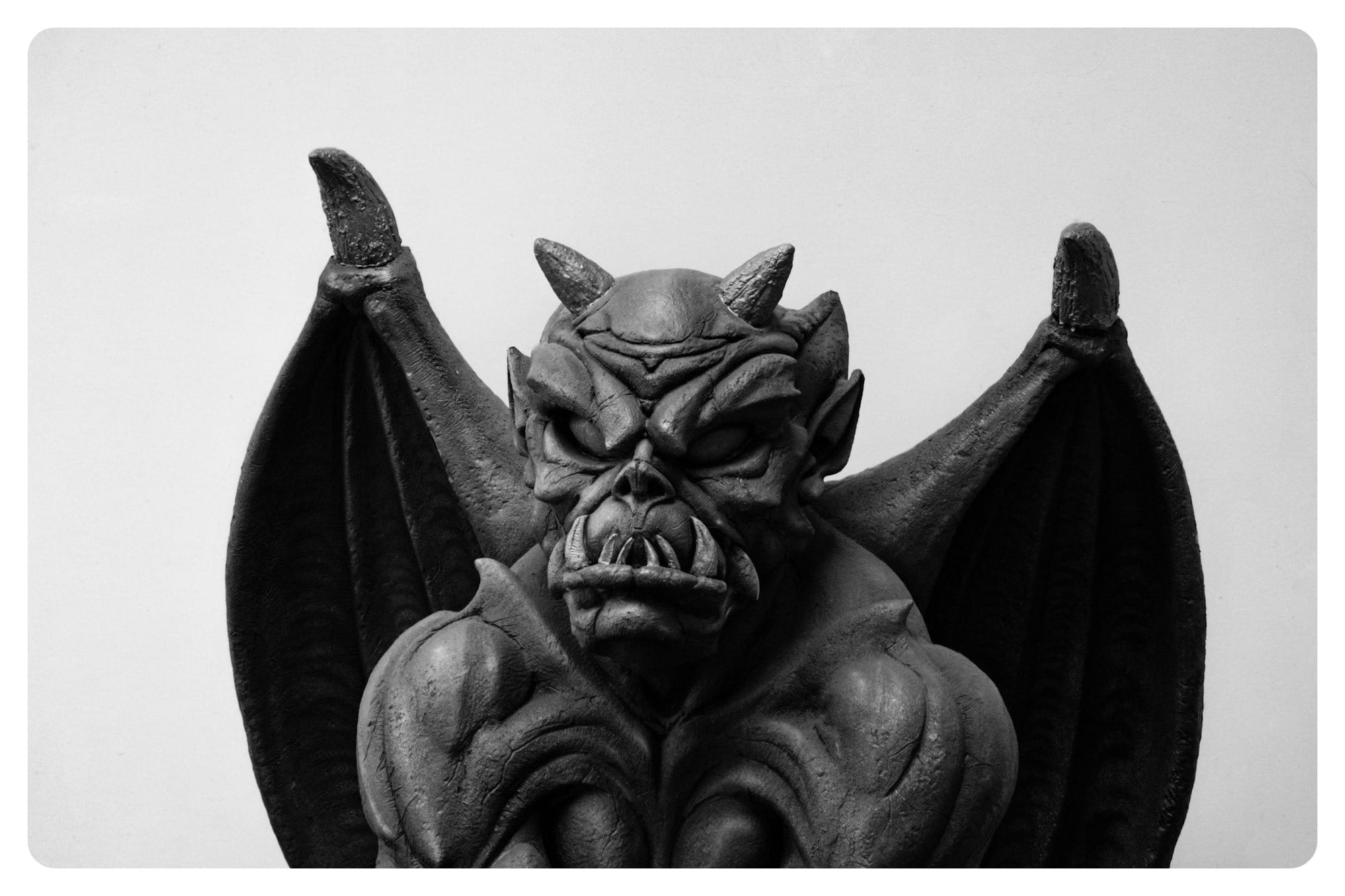
The 'Overcoming the Monster' framework involves an imperfect hero facing a seemingly unconquerable foe, and as the hero gets overwhelmed by the nightmare of this monster, your solution comes into action; helping the hero make a thrilling escape and survive the scary monster.
This framework is especially effective in the financial service industry, as financial crises/challenges, regardless of their form, tend to get overwhelming and nightmare-inducing for many individuals. Leveraging this storytelling template can inspire strong action among your target customer towards that targeted problem.
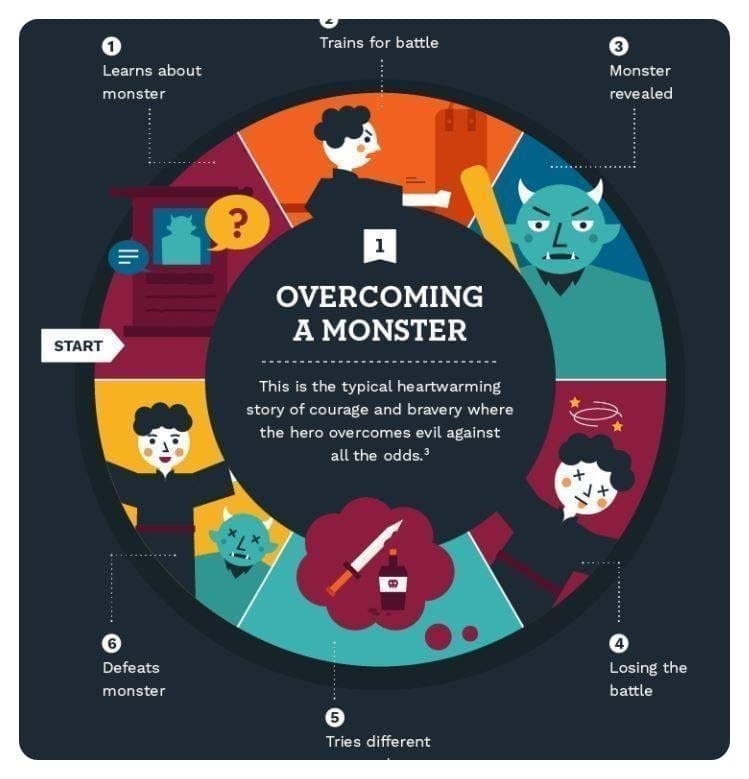
'The Hero's Journey' framework is another popular storytelling template that involves a hero, with their unique set of behaviors, needs, and wants, modeled by your business' ICP.
It depicts the various hurdles and disruptions the hero faces in their daily life and follows the hero's journey of trying to solve their problem as it grows worse; until your brand's offering steps in, fulfilling their needs and helping them grow!
This storytelling framework is especially advantageous for financial service businesses, as it helps innovative firms break through in the market by building trust and signifying your superior product offering; this especially helps in distinguishing your business from the aggressive competition and well-established traditional financial institutions.
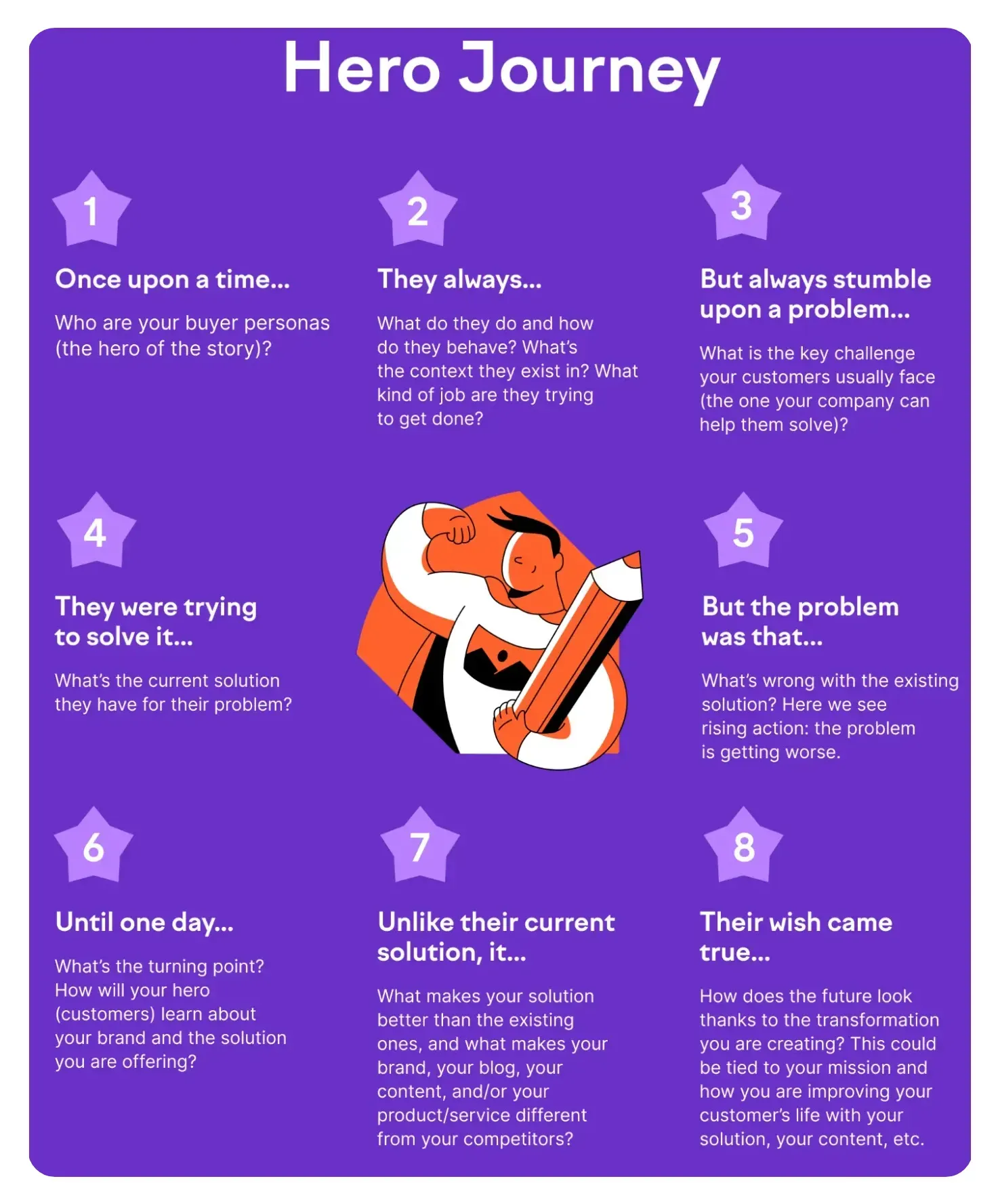
Case Study 3– Wealth Simple
To demonstrate, look at this other real-life example:
This Canadian-based robo-advisor that offers automated investing services has been experiencing rapid growth; with assets rising about 10-fold to C$25 billion since 2018, thanks in part to their slick advertising.
And by slick advertising, I mean impactful brand storytelling that they implemented in their ads!
This, among the many other ads in their campaign, showcases the real-life financial journey of their ideal customers.
They delivered the story with a tone of empathy and understanding; allowing them to effectively engage the audience with the story and its message.
This storytelling approach helped humanize the brand and establish a connection with potential customers who could see themselves reflected in the stories being told.
Through these narratives, Wealthsimple communicated its brand power – simplicity. Their message was that investing doesn't have to be complicated or intimidating and that everyone, regardless of their financial situation, deserves access to simple and effective investment solutions!
Case Study 4 (Bonus!)– Coca Cola
At the risk of going overkill, I just had to include this one bonus case study outside the financial service space.
I had to because the execution of this storytelling campaign was flawless, and perfectly exemplifies the power of 'The Hero's Journey' framework!
In 2018, Coca-Cola released an advertisement aiming to counter Islamophobia and build a strong customer base in the Middle East. This commercial aimed to educate the audience about Ramadhan and show solidarity toward Muslims.
Take a look.
Heart Touching ad wasn't it? No words were ever needed to be said!
It showcased the classic hero's journey, as it showed the Muslim woman experiencing a set of challenges she tries to overcome, to end in triumph, all while promoting Coca-Cola's drinks and the brand's power of uniting people from different cultures.
4) Define Your Brand Power!– Your Brand Story's Message
Brand Power is the influence and personality that your brand possesses. And although it is usually covered through your brand purpose and identity, I just wanted to dedicate a separate section, to really highlight how crucial your brand power can be.
Having an impactful brand power is the difference between making and breaking your campaign's success!
It is this simple yet incredibly powerful message that should be delivered effectively through your story. This brand power must deeply resonate with your customers emotionally and act as the main driver of converting leads to customers!
To craft such a brand power, your business must possess a deep and accurate understanding of your target audience's pain points and struggles, and this brand power should be articulated into a one to two-word message; ensuring a solution to their pain point.
Delivering this impactful message through a sentimental and well-crafted story will help in developing a robust customer connection around your brand!
Case Study 5– Klarna
To illustrate this, look no further than with Klarna!
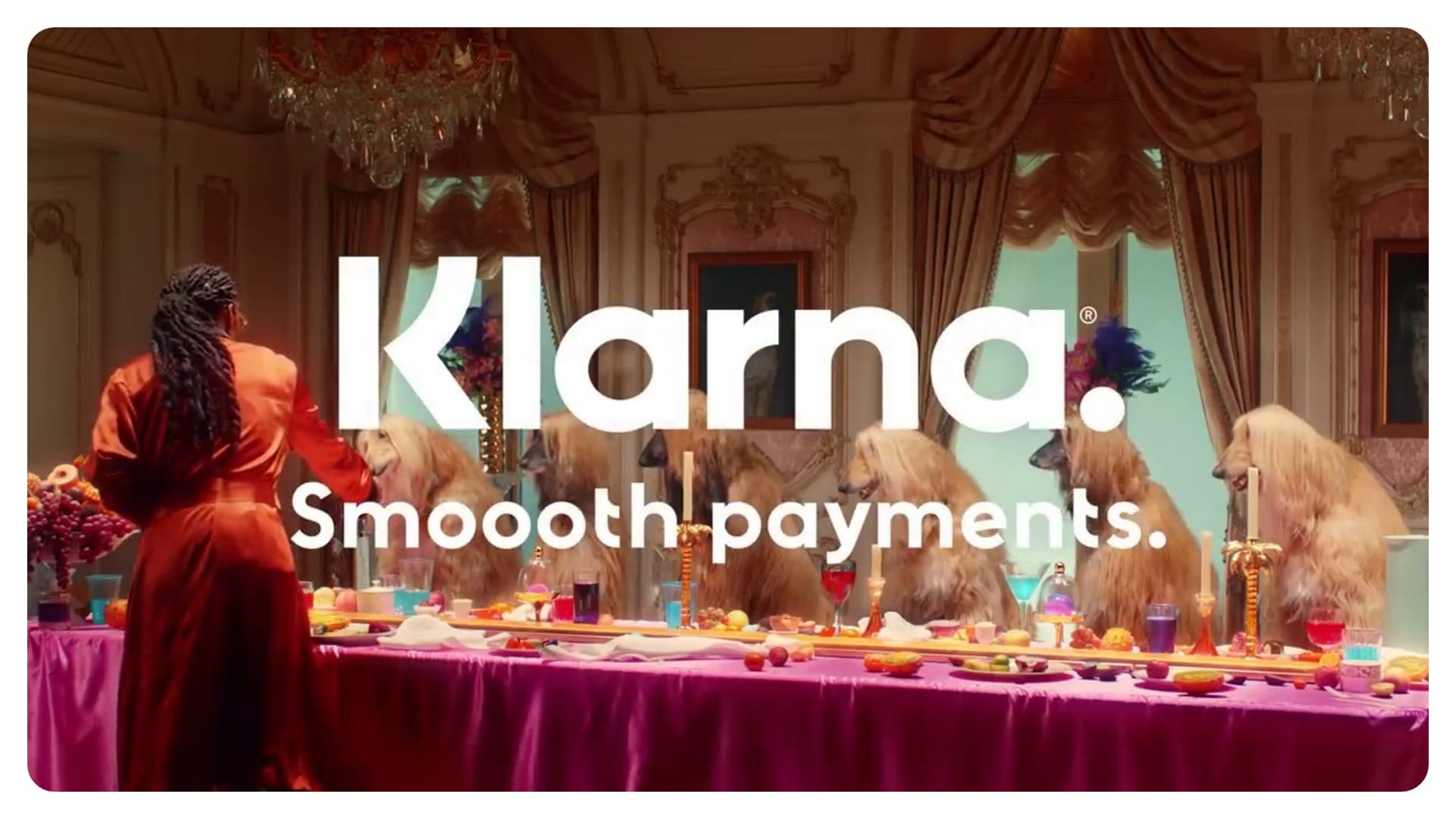
This popular online payment fintech has brilliantly built a robust brand around its power of "Smoothness". This term encapsulates Klarna's commitment to providing seamless and hassle-free payment experiences for its users.
This smoothness is what distinguishes Klarna from the saturated Buy Now Pay Later market, and is evident with Klarna reaching over 37 million consumers (32% YOY growth) in 2023, and having a rapidly expanding retail network!
Therefore this brand power takes center stage in all of their branding campaigns, including their ad campaigns. Take a look at this brand narrative titled, "A$AP Rocky Gets Smoooth".
And it's this brand power that inspires the audience to convert and stay loyal to the brand, as Klarna truly understands their frustration with the uncertain, complex, and cumbersome online shopping experience.
5) Write down your Brand Story
Now with all the elements of the story ready, and a more holistic sense of your customer's needs and behaviors through this process, it's time to construct your brand story!
Write a 200-300 word rough script. Make sure it covers your customer's pain points and needs, showcases your customer's typical behaviors, answers why your brand exists, and communicates your brand's purpose; all while following a consistent theme, that is your brand power!
Here are a few quick points to consider:
- What kind of circumstances does your ICP exist in?
- What are their typical behaviors?
- What are their challenges and needs?
- Why does your brand exist?
- What is its mission—how are you changing your hero’s life?
- What is your brand's origin story?
- What unique value proposition and brand power can your company deliver?
While writing your story also focus on maintaining a unique, relevant, and engaging tone of voice for your brand; making your presence more recognizable and message delivery more effective!
You can achieve this through establishing writing style guidelines for your company's marketing materials and content.
6) Build Authenticity and Integrate it Consistently
To ensure that your brand story becomes a lasting and sustainable investment for your brand's growth, your business needs to remain steadfast in its commitments and develop a consistent brand image in the long run.
This means implementing your brand purpose and the story's message into brand guidelines; informing your business practices & decisions, sales teams, and customer service teams to align with this overarching theme of the story.
Cultivate a work culture that values and embodies the core message of your brand story by:
- Implementing tailored recruitment efforts to attract candidates who align with the brand story and values.
- Integrating the values, purpose, and message communicated in the story into your onboarding process through explainer videos; properly communicating the brand's essence to new employees.
Furthermore, it requires a meticulous mapping of the customer journey to ensure that every interaction with your brand reflects and delivers upon the unique experience and value proposition promised.
And of course ensure that this story becomes the basis of your further ad creatives, content plans, social media posts, tone of voice, visual identity, website UX, and many more.
These things are what make up your brand identity entirely. By staying true to your brand and consistently delivering on your promises, your business can align the customer's brand image with your desired brand identity; forging trust among customers and ultimately driving sustained growth and success from your brand storytelling campaigns!
Case Study 6- Salem Investments
To get a better grasp on what this means, take a look at what Salem Investments is doing.

This North Carolina-based financial advisory firm, Salem Investments has been on a rapid growth journey, with an impressive $1.7 billion in assets under management and the distinction of being CNBC's #1 financial advisory firm in the US for two consecutive years!
Salem Investments has strategically cultivated a brand identity centered on integrity and commitment. And the firm stayed true to it.

At the helm of Salem Investments is David Rea, the firm's president, who demonstrates unwavering passion towards their brand purpose, and makes it the cornerstone of their operations.
Salem Investments only focuses on hiring patient and compassionate advisors and actively trains them on building long-term relationships when approaching clients; staying true to the principle of commitment.
With the firm providing personalized attention, tailored solutions, and fostering long-term relationships with clients, they can optimize the customer journey and fulfill their brand promises.

Hence, by simply staying true to the organization's core values and acting on them, Salem Investment was able to build a reputation of commitment and integrity; garnering trust and immense growth over the years!
Case 7 (bonus!)– Southwest Airlines
Here again with another bonus case study outside the financial service industry. But Southwest Airlines brilliantly demonstrated employee branding in effort to stay consistent with its brand narratives!

The company's unique cultural values, including the "warrior spirit," "servant's heart," and "fun-loving attitude," were integral to its brand identity. These values were aligned with Southwest's brand promise to customers of efficiency, affordability, and cheerfulness.
Southwest's recruitment practices were tailored to attract individuals who embodied its cultural values. The company's recruitment ads stood out for their humor and authenticity, contrasting with traditional skills-based advertisements. Southwest sought candidates with the right attitude and personality, believing it was easier to develop skills in-house than to instill the right attitude.
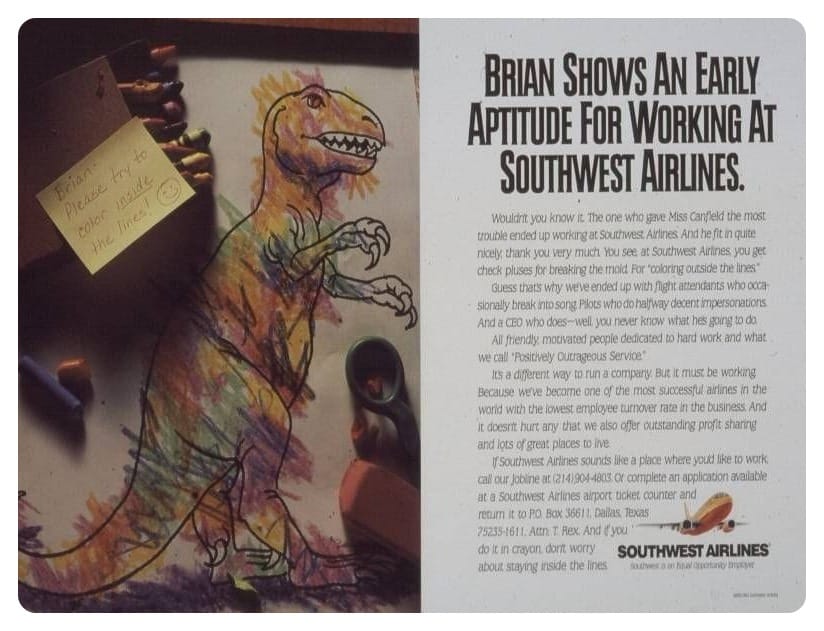
Southwest's employee branding efforts extended beyond recruitment to include training programs and cultural committees to ensure they upheld Southwest's culture and values within their teams.
This alignment of employee branding with Southwest's brand narrative contributed to its success in delivering on its brand promise. Southwest truly lives the brand in terms of cheap and cheerful holistically; winning major awards in customer satisfaction, and has grown to become the biggest domestic airline in the US!
Conclusion
Customers tend to see their purchases as more than just simple transactions, but as a solution that caters to their pain points, and as an extension of the customers' true values and identities!
Making these simple transactions into more purposeful experiences is the entire essence of branding, and the best way to form that perception and experience is by an emotionally impactful brand narrative that is true to the business' identity
Brand storytelling serves as a powerful tool to set your brand apart, forge emotional connections with your audience, and cultivate a loyal customer base that endures over time. And I hope this guide perfectly explains that!
And I understand that a lot of information and valuable insights have been dropped in this one post, but don't start feeling intimidated by it!
This blog explained the 6 steps needed in crafting a powerful brand narrative:
1) Identify Your Brand Purpose and Identity– The Origin Story
2) Construct Your Brand's Persona
3) Define Your Character's Story Journey
4) Define Your Brand Power!– Your Brand Story's Message
5) Write down your Brand Story
6) Build Authenticity and Integrate it Consistently
Take one step at a time, and ensure you perform in-depth market research on your business correctly, as it will determine the level of success of your entire brand narrative campaign!
But if you still seem underconfident and require more guidance tailored to your business's needs and circumstances, don't hesitate to click that "Book an Appointment" button. I and my team will be more than happy to conduct a free session to clear out doubts and strategize viable routes to take in your business's branding journey!


